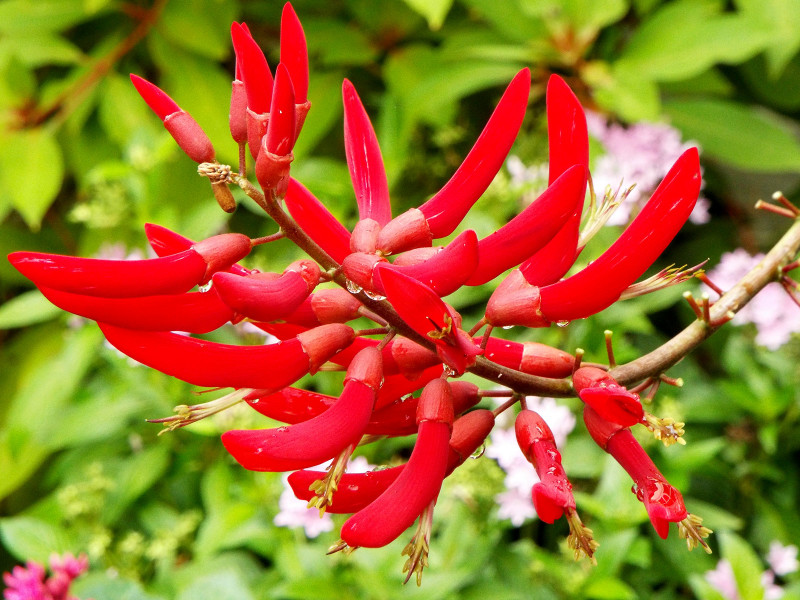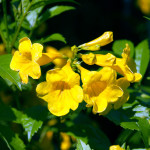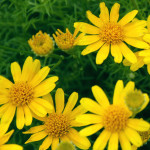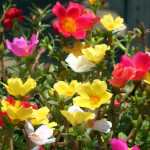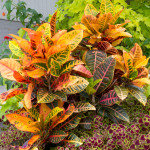Nothing ignites a garden like vibrant color … the bolder the better. Hot Texas summers light the fuse on some screaming hot hues sure to propel your drab garden to new heights and explode in a crescendo of color.

Coralbeans
Coralbeans (Erythrina sp.) flower in long (24 inches plus), rocketing spears of screaming red blossoms that resemble flash-frozen aerial fireworks. Tropical and subtropical trees that can be grown in some parts of Texas, these beauties bring an exotic flavor to the garden. Hardy coralbean (E. herbacea) is winter hardy as far north as McKinney, where it behaves like an herbaceous perennial (cut it to the ground mid-winter). Cockspur coral tree (E. crista-galli) is a small accent tree for the warmer regions of Texas (Houston and southward). Shrub coral tree (E. x bidwillii) is a hybrid between the two, acquiring hardiness from one parent and larger inflorescences from the other. I have seen it as far north as Waco, but it’s especially popular in Austin and San Antonio, where it is most often grown as a large shrub, but can be trained to tree form.
Cosmos
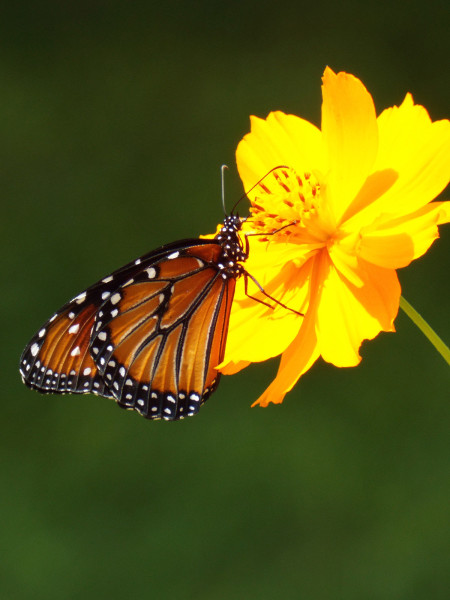
Cosmos are grown easily from seed. They love Texas heat and sun, and butterflies love them in return. Photo © Steven L. Chamblee
Famous for being one of the easiest plants to grow from seed, cosmos also puts on quite the show. Rich reds, super-bright pinks, and satiny whites are the trademarks of Cosmos bipinnatus, one of two species commonly grown in Texas gardens. The other, Cosmos sulphureus, produces yellow, golden, or orange flowers. Both species are native to Mexico, prefer average soil, no fertilizer, hot weather, full sun, and unlike so many other flowers, actually thrive in straight western exposure. Lots of colors and color mixes are available, and all seem to do well in Texas, though those irresistible “seashell” varieties with the tubular, fluted petals seem less robust. Read the fine print on the label as to the height of your particular variety, as they range from about 18 inches to over 10 feet tall!

The fiery foliage of ornamental amaranth is a special gift in hot summer gardens. Photo © Neil Sperry
Amaranth
Ornamental amaranth (Amaranthus tricolor) is a new twist on an old plant. (Amaranth has been grown worldwide as a food crop for more than 8,000 years!) Fiery foliar colors erupt on serpentine columns of slender leaves that create a geyser effect, as well as some inspired names for particular varieties, such as Flaming Fountain and Molten Fire. For foodie gardeners, the grain amaranths produce protein-packed seeds with a nearly perfect amino acid profile. These tiny seeds are tucked away in strikingly beautiful inflorescences of green, orange, red, or purple, depending upon variety. These flower spikes vary wildly in structure, from feathery to stringy, knobby to gnarly, inspiring names such as Golden Giant, Love Lies Bleeding, Elephant, and Dreadlocks. Perhaps the best feature of amaranths is that they perform superbly in full sun, hot summers, and average garden soils.
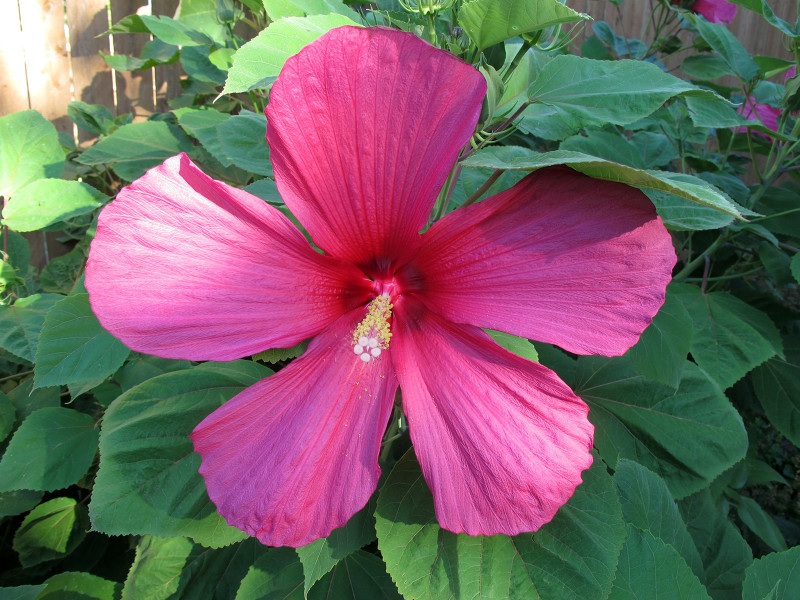
Moy Grande, a hibiscus bred by the late Dr. Ying Doon Moy of the San Antonio Botanical Garden, bears huge neon pink blossoms in abundance. Photo © Carolyn Skei.
Hibiscus
Hibiscus are hot! Huge blossoms bring a boldness to the garden like nothing else. Texas Star hibiscus (Hibiscus coccineus) is a large perennial, often reaching 8 feet tall and sporting bright red, 6-inch-wide flowers. The petals on this hibiscus do not overlap, creating the distinctive star-shaped blossoms. Moy Grande, a hybridized hibiscus, also has star-shaped blossoms, but they reach an impressive 12 inches in diameter. Other excellent hibiscus hybrids include Flare, Lord Baltimore (both red), and Lady Baltimore (pink). Chinese hibiscus (H. rosa-sinensis) is a tropical plant that flowers heavily all summer. It comes in a seemingly endless variety of flower colors, including some with four distinct radiating colors on the same blossom.
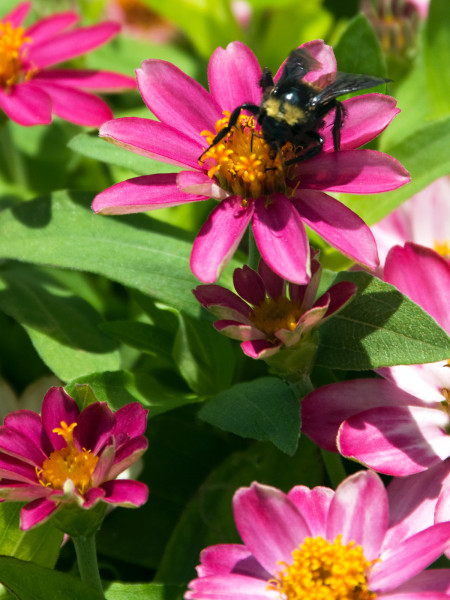
Zinnias are old-fashioned summer favorites that are still staples in gardens all across Texas. Photo © Neil Sperry.
Zinnias
Zinnias are old-fashioned favorites that never really went out of style. The huge blossoms on Zinnia elegans (arguably grandmother’s favorite flower) can grow up to 6 inches wide and vary through the most startling range of colors … primaries, pastels, and almost every shade of each. New generations of zinnia have been hybridized (Profusion, Zahara), with smaller but more numerous flowers, compact growth habits, and disease resistance, primarily to powdery mildew. Super tough and easy to grow, zinnias add zing to any Texas garden.
Send your garden into orbit with some hot color!
